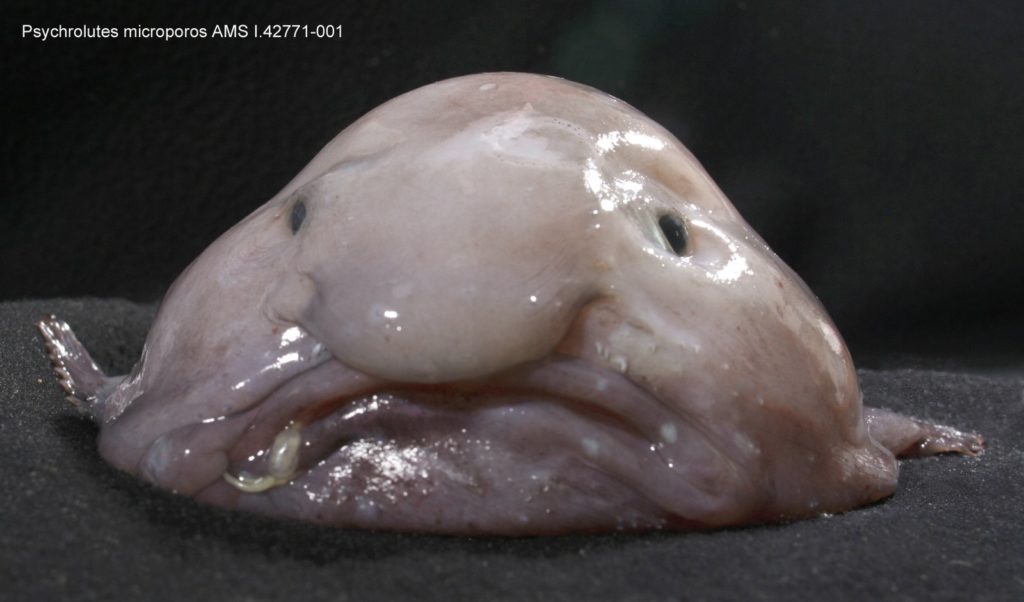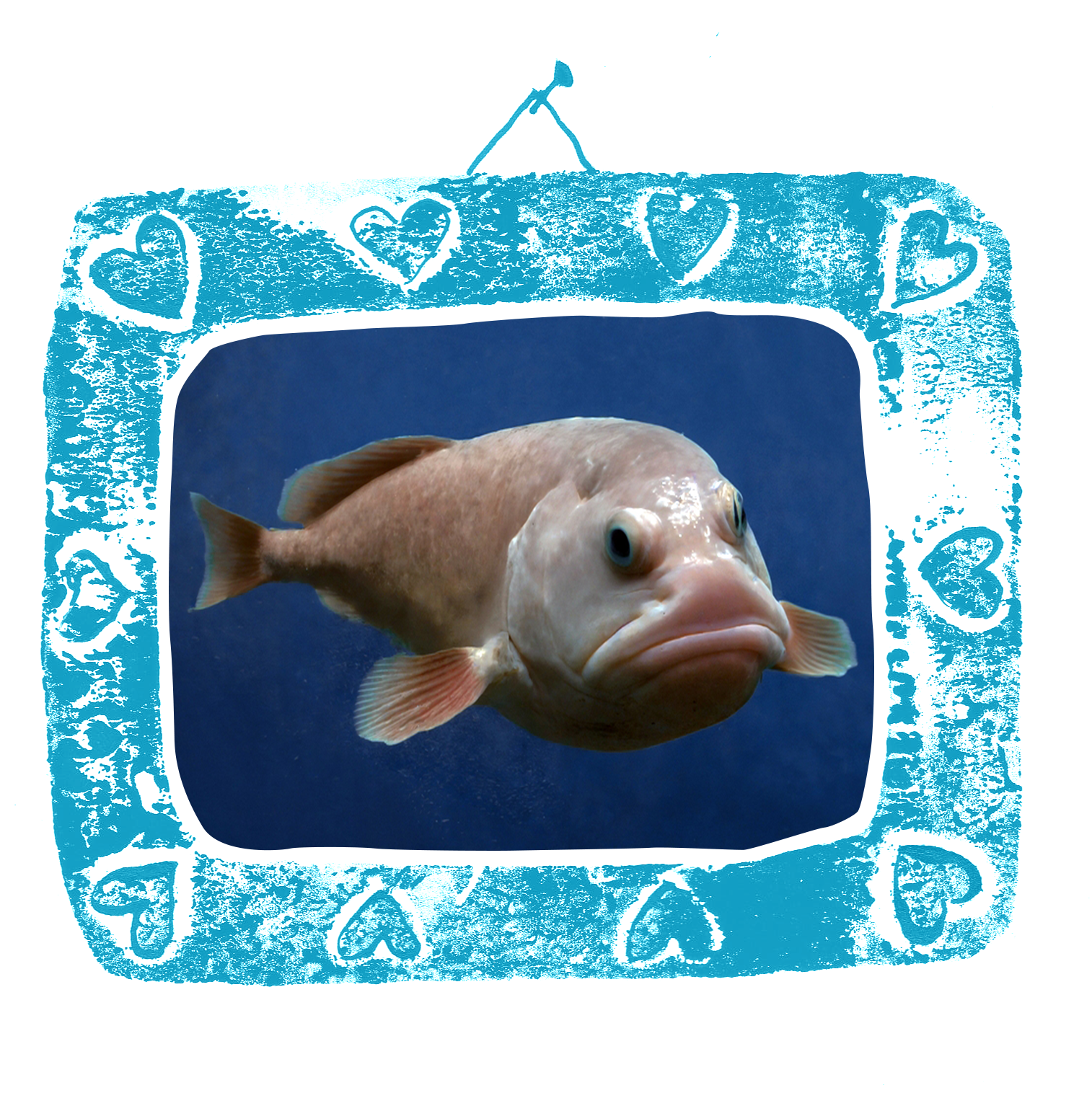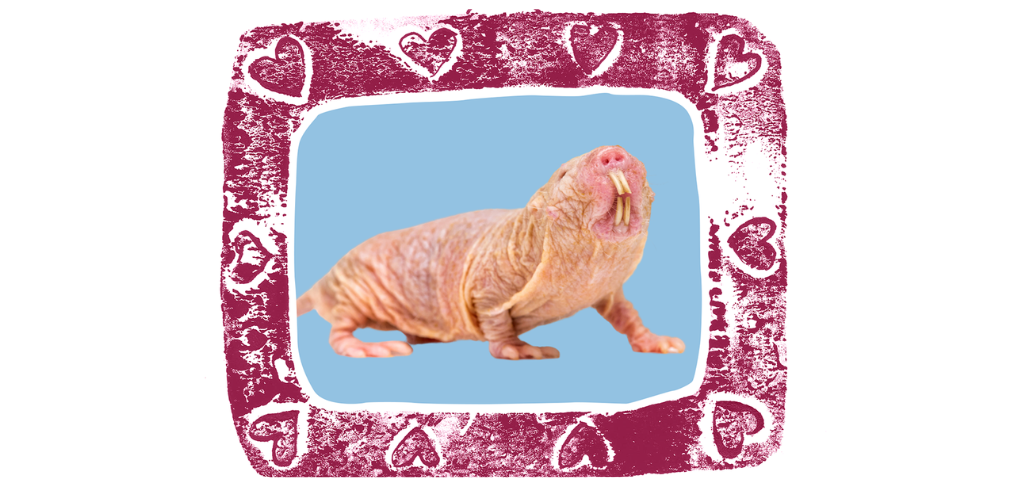Unjustly so, says ecologist Francisca Virtuoso. who aims to correct this through her project Love the Ugly. On Resource-online, she writes a beautiful story about an ugly animal every month.
Text Francisca Virtuoso
Blobfish (Psychrolutes marcidus)
Nominated the world’s ugliest animal during a poll in 2013, the blobfish is a common answer to “think of an ugly animal”. This fame is not really a fair one, as this blobby image is based on the out of water appearance of the fish, which is actually pretty normal looking under water.
Pressure makes me pretty
Why would a fish look like a grumpy old man? Well, it doesn’t really. Despite its fame, blobfish are pretty normal looking fish, when in their natural habitat. This gelatinous fish species can be found at great depths, where the pressure is extremely high, about 120 times higher than at the surface. As a result, their bodies have a number of adaptations which contribute to their weird looks: no real skeleton, no strong bones or muscles, very high water and fat content, and loose pink skin instead of scales.

Blobfish rely on the water pressure to keep their boneless gelatinous bodies together and afloat, as their density is slightly lower than water. If blobfish were taken out of the water, the depressurization would cause deadly tissue damage and they’d collapse immediately. With no bones or muscles to hold their bodies together, the floppy deformity which has given them their common name, takes place.
Life in the dark
Blobfish are only found in the South Pacific Ocean, on the coasts of Australia, new Zealand and Tasmania. While most marine species live in the top 200m layer, where the sunlight can still reach, our blobby friends prefer dark, cold, deep habitats, reaching over 1km of depth. And where there is little light and warmth, there is little food.
Still, this species does not put much effort into hunting. They take the couch potato approach to a much deeper level. With little control over their bodies, the blobfish floats around with their mouths open, waiting patiently for any shellfish, mollusks, crabs, or lobsters to get close enough to their mouth to be hoovered in. Anything will make a nice meal for this predator! With no teeth and little strength to put up a fight, they can’t really be picky with what they eat. Quite the feracious, dangerous carnivore!
Blobfish generally live a slow stress-free life due to the lack of natural predators and their slow developmental rate. Hence, they can live an exceptionally long life. While the majority of wild fish species live between 1 and 10 years, this species can live up to 130 years. During their long lived lives, blobfish share maternal responsibilities, by using communal nests that can hold more than 100,000 eggs at once. One adult fish will always stay with the fertilized eggs to guard and occasionally clean them. This is especially important because of the lack of caverns, vegetation and rocks at such depths, that could potentially protect the eggs.
Out of sight, out of knowledge
Besides the above, not much is known about this fascinating species’ behavior or habits. Due to how difficult it is to reach their natural habitat at such depths, these fish are very difficult to study alive or in the wild. Most of the knowledge comes from the dead blobfish that are captured as bycatch in trawling nets. This happened for the first time in 2003, during an expedition in New Zealand where this species was captured by accident. This was when the blobfish received its common name, which has been the main reason for its fame.
The blobfish is thought to be quite rare, and there have been rumors about it being endangered. However, since they have not been studied in detail yet, their conservation status remains unclassified at the moment. This lack of knowledge is common in a lot of deep water fish, which remain a big mystery to scientists. We know more about our neighboring planet Mars than we do about the bottom of the ocean! But, at least, we now know a little more about one of its inhabitants: the not so blobby blobfish.
Francisca Virtuoso is a PhD candidate in Wildlife Ecology and Conservation. Next time in Love the Ugly, learn about the tarsier, the only fully-carnivorous primate in the world! Is there an ugly animal you would like to see in the spotlight? Send a message via @love_the_ugly.

 Despite its fame, blobfish are pretty normal looking fish, when in their natural habitat. Photo Shutterstock
Despite its fame, blobfish are pretty normal looking fish, when in their natural habitat. Photo Shutterstock 

